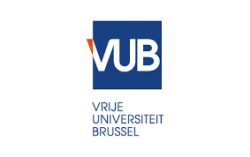- Back
- Location
- Anywhere
- Date Posted
- 24 Sep 2024

- Type
- PhD Project
- Anywhere
- 24 Sep 2024
PhD scholarship position

NOTE: this position listing has expired and may no longer be relevant!
Position Description
Stereotactic Body Radiotherapy offers an early and profound tumor cell kill, which is completely
different from normal fractionation schemes. The biological effects of high radiation doses on small
volumes need further investigation. This research pays special attention to tumor hypoxia, tumor
vasculature and tumor-associated/infiltrated immune cells. Recent developments in radionomics have the potential to link these specific elements from the tumor microenvironment to texture parameters on imaging modalities such as CT, MRI and PET. The UZ-Brussels recently developed an imaging platform able to extract several parameters directly from 3D images in order to perform texture analysis. This platform allows for a fast and robust measurement of several parameters (grey level distribution, volume, texture…) and the development of a correlation model with Local Control and adverse event as outcome parameters. All patient data will be analyzed with this platform and a robust statistical/machine learning approach will be used to select which ones are and which ones are not correlated with patient outcome. These radiomics features will be combined with other predictive parameters (Glasgow Prognostic Index, Neutrophil/Lymphocyt-ratio, FACS of circulating immune cells and immunohistochemistry of biopsies) to build a robust predictive model.
The prescription of radiotherapy is based on the balance between the probability of tumor control
(TCP) and normal tissue complication probability (NTCP). Current limitations are the simple
assumptions between dose, volume and TCP/NTCP. For example, the Lyman-Kutcher-Burman (LKB) model applies a probit regression, which maps volume and dose to the NTCP. The model assumes a dose uniformly applied across the volume. Assuming spherical volumes, one could account for dose
inhomogeneity by taking differences into account for the dose as a function of the radius w.r.t. the
volume center. On top of that the probit model can be enhanced by considering patient dependent
variables which may be confounders affecting the NTCP. The hypothesis, that patient characteristics may suggest using a different dose, implies introducing interaction parameters between dose and patient characteristics. Since generalized linear models are prone to overfitting, the patient characteristics, which significantly influence the NTCP, must be statistically assessed.
We intend using Random Regression Forests, which is a promising family of techniques introduced
from ideas of machine learning. This approach combines state-of-the-art techniques in computational statistics such that it is fully data-driven while controlling for overfitting. The technique does not suffer from computational issues if applied to generalized linear models.
This model will serve as a predictive tool for local control and organ toxicity in order to enable patientindividualized and biologically-modulated adaptive radiotherapy. We will develop a dedicated
computer app, which will be the intellectual property of the VUB.


